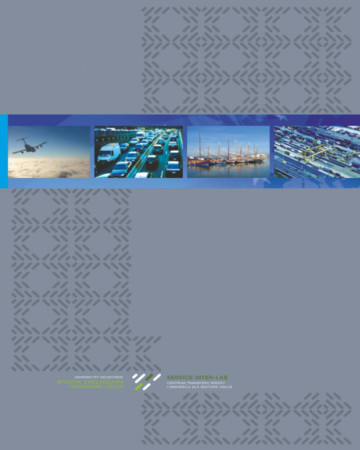
ISSN: 1644-275X
eISSN: 2353-3005
OAI
DOI: 10.18276/ptl.2017.37-36


Issue archive /
nr 1 (37) 2017
Rozwój transportu wodnego śródlądowego na zapleczu portów morskich - ważne i aktualne wyzwanie
(DEVELOPMENT OF INLAND WATER TRANSPORT IN SEAPORTS HINTERLAND – IMPORTANT AND CURRENT CHALLENGE)
| Authors: |
Krystyna
Wojewódzka-Król
Wydział Ekonomiczny, Uniwersytet Gdański Ryszard Rolbiecki Wydział Ekonomiczny, Uniwersytet Gdański |
| Keywords: | Inland water transportation maritime ports |
| Data publikacji całości: | 2017 |
| Page range: | 11 (285-295) |
| Klasyfikacja JEL: | D18 L98 R41 |
Abstract
Multipurpose development of the lower Vistula will benefit in various areas of the economy in: transport, tourism, energy, flood protection, agriculture and forestry (reduction of losses associated with drought). The aim of the work is to demonstrate that the multipurpose development of inland waterways is a current and important challenge for the economy, especially for the competitive position of seaports. This problem will be presented on the example of the lower Vistula. In the research was used the method of cost / benefit analysis. In light of the problems associated with excessive overload of road and rail transport infrastructure, the use of inland waterway transport in the hinterland of seaports Gdańsk and Gdynia would provide the additional benefit of reducing costs of transport and, external costs, however the most important result, will to strengthen the competitive position of the port of Tri-City and to increase state revenues. Research has shown that the economic cost / benefit ratio of multipurpose development of the Lower Vistula River stands at 6.11, which testifies to the high profitability of the project.
Download file
Article file
Bibliography
| 1. | Hafen + Transport Intermodal. Containerticker (2014). Schiffahrt Hafen Bahn und Technik, 7. |
| 2. | Hafen + Transport Intermodal. Containerticker (2006). Schiffahrt Hafen Bahn und Technik, 1. |
| 3. | Hafen + Transport Intermodal. Containerticker (2008). Schiffahrt Hafen Bahn und Technik, 1. |
| 4. | Handelskammer Hamburg (2015). Der Hafen Hamburg auf einen Blick, Hamburg, mai 2015. Pobrano z: htp://www.hk24.de/blob/hhihk24/standortpolitik/downloads/ (dostęp: 31.07.2015). |
| 5. | INE (2015). Inland Water Transport by numbers 2015,. Port statistics. A wealth of information. Make it happen. Pobrano z: https://www.portofrotterdam.com/en/the-port/facts-figures-about-the-port (dostęp: 9.05.2016). |
| 6. | Institut für Seeverkehrswirtschaft und Logistik, Bremen (2015). Prognose des Umschlagspotenziales und des Modal Splits des Hamburger Hafens für die Jahre 2020, 2025 und 2030. |
| 7. | Opoczyński, K. (2011). Synteza wyników GPR 2010. Warszawa: Transprojekt – Warszawa Sp. z o.o. Pobrano z: http://www.gddkia.gov.pl/userfiles/articles/g/GENERALNY_POMIAR_RUCHU_2010/0.1.1.5_Synteza_GPR_2010.pdf. |
| 8. | Port Antwerp (2013). Facts & figures 2012. Antwerp Port Authority, June 2013. Pobrano z: www.portofantwerp.com (dostęp: 26.04.2014). |
| 9. | Port Antwerp (2014). Annual Report 2012 – Foreland and Hinterland. Pobrano z: www.portof-antwerp.com/en/foreland-and-hinterland (dostęp: 26.04.2014). |
| 10. | Port Antwerp (2015). Facts & Figures 2015. Port of Antwerp, June 2014. Pobrano z: http://www.portofantwerp.com/sites/portofantwerp/files/Cijferboekje_2015_UK.pdf (dostęp 16.05.2016). |
| 11. | Port Gdańsk (2016). Pobrano z: www.portgdansk.pl/o-porcie/port-gdansk-dla-polski. |
| 12. | Port Hamburg (2010). Hamburg halt Kurs. Der Hafenentwicklungsplan bis 2025, Hamburg 2012. Pobrano z: http://www.hamburg-port-authority.de/de/presse/broschueren-und-publikationen/Documents/HEP_2025_Summary_g.pdf. |
| 13. | Port Hamburg (2012). Hamburg hält Kurs. Der Hafenentwicklungsplan bis 2025, Hamburg, Oktober 2012. Pobrano z: http://www.hamburg-port-autho-rity.de/de/presse/broschueren-und-publikationen/Documents/HEP_2025_Summary_g.pdf. |
| 14. | Port Hamburg (2015). Port of Hamburg. Statistiken. Modal-Split im Container-Hinterlandverkehr. Pobrano z: http://www.hafenhamburg.de/de/statistiken/modalsplit (dostęp: 20.10.2015). |
| 15. | Port Hamburg (2016). Hafen Hamburg Marketing e.V. Pobrano z: https://www.hafen-hamburg.de/en/statistics/modalsplit (dostęp: 9.05.2016). |
| 16. | Port of Rotterdam (2015). Modal split maritime containers. Pobrano z: https://www.portofrotterdam.com/sites/default/files/ Modal%20split%20maritieme%20containers%202014-%202011.pdf (dostęp: 29.07.2015). |
| 17. | Port Rotterdam (2016 ). Port statistics. A wealth of information. Make it happen. Pobrano z: https://www.portofrotterdam.com/en/the-port/facts-figures-about-the-port (dostęp: 9.05.2016). |
| 18. | Roczniki Statystyczne Gospodarki Morskiej, GUS, Warszawa, Szczecin. |
| 19. | Wojewódzka-Król, K., Rolbiecki, R. (2016). Badania społeczno-ekonomicznych skutków zagospodarowania dolnej Wisły. Etap III. Szacunek kosztów i korzyści kompleksowego zagospodarowania dolnej Wisły. Sopot: Energa SA. |
| 20. | Wojewódzka-Król, K., Rolbiecki, R. (2015). Badania społeczno-ekonomicznych skutków zagospodarowania dolnej Wisły. Etap II. Badanie popytu na przewozy drogą wodną śródlądową. Sopot: Energa SA. |